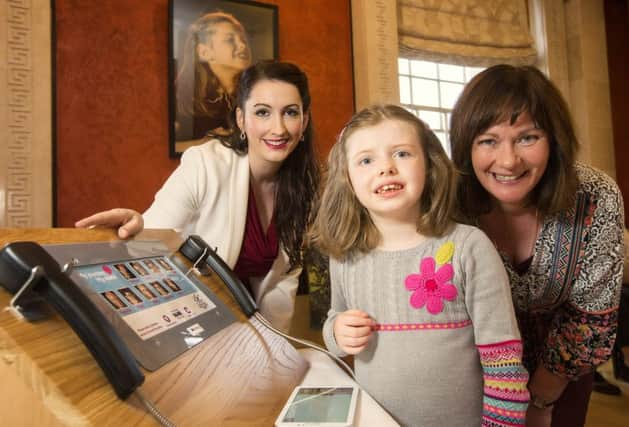Locals take part in exhibition


The exhibition, which features nine portraits by local photographer Laurence Gibson, is a collaborative project.
It has been commissioned by The Royal College of Speech and Language Therapists (RCSLT) as part of its Giving Voice campaign and is supported by Disability Action and the Northern Ireland Health and Social Care Board.
Advertisement
Hide AdAdvertisement
Hide AdLisburn’s George Lilley and Dunmurry’s Oliva Curran were participants in the exhibition.
Olivia has a condition called Autistic Spectrum disorder (ASD).
ASD is a life-long, complex developmental disability affecting communication and social skills.
Some people with ASD also have an accompanying learning disability.
Advertisement
Hide AdAdvertisement
Hide AdHowever everyone with ASD shares a difficulty in making sense of the world around them and relating to other people.
Some people with ASD use augmented or alternative (AAC) methods of communication such as signs and or picture boards.
Lisburn man, George Lilley has Cerebral Palsy (CP) which is a neurological condition that is present from childhood and is life-long affecting his posture, muscles, coordination and movement.George’s cerebral palsy affects his speech because of the difficulty in controlling the tongue, breathing and vocal cords.
CP can range from mild to profound and people with CP may experience a range of problems including difficulty with eating and drinking.
Advertisement
Hide AdAdvertisement
Hide AdEach participant featured in the exhibition has a communication disability.
Visitors will be able to view their portraits and listen to their voices as they each recount a memorable journey they have taken.
Their stories will resonate with many: they include a once in a lifetime holiday, the first day of a new job; and a sunny day at the beach with an ice cream.
Due to their disability, many of those participating have voices and speech that will sound different to listeners.
Advertisement
Hide AdAdvertisement
Hide AdSome use vocalisations which may be unintelligible to anyone other than close family. Others use alternative or augmentative forms of communication (AAC) such as signs and or symbols and others use communication devices that produce electronic speech.